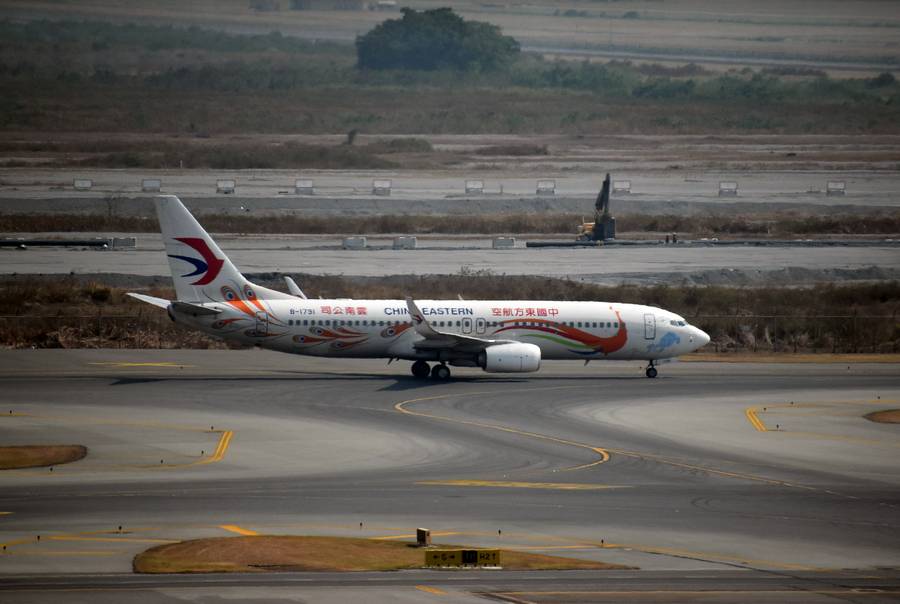Authorities in China have held a press conference, clarifying some details in the China Eastern 737 crash. No survivors have been found.
This is the country’s first fatal accident since August 2010. This was a Henan Airlines Embraer E-190, with 44 fatalities out of 96 people on board. Unfortunately, the Chinese authorities are so far reporting that there are no survivors in this crash. Its severity, the mountainous terrain and the vegetation are making the rescue and recovery effort especially challenging.

In the hours after the crash of the China Eastern 737, there were several images and videos of the event online. Many of those were (and still are) difficult to verify. Even pictures from the same source appeared to show multiple crash sites. Chinese authorities now confirm that there are indeed two separate crash locations, on two sides of a hill. The overall area is 1 square kilometre (~250 acres) in size.
Beyond these two sites, the fire appears to have consumed vegetation in a wider area, creating more clearings. Authorities have also closed off areas with other aircraft debris, away from the main crash sites. Rescue and recovery crews have not yet located the black boxes of the China Eastern 737 in the crash site.
#MU5735: The China Aviation Administration confirmed no survivors found. The Boeing 737-800 took off at 13:16L climbed to 8900 meters and called Guangzhou radar at 14:17. At 14:20 ATC noticed a rapid loss of altitude. At 14:23L all radar signal was lost. https://t.co/1W2b0LNmld pic.twitter.com/RBtvF0s47N
— JACDEC (@JacdecNew) March 22, 2022
China Eastern 737 Crash Investigation
CAAC (Civil Aviation Administration of China) is investigating, with representatives from NTSB, Boeing and engine maker CFM also taking part. Boeing released the following statement:
“Our thoughts are with the passengers and crew of China Eastern Airlines Flight MU 5735. We are working with our airline customer and are ready to support them. Boeing is in contact with the U.S. National Transportation Safety Board and our technical experts are prepared to assist with the investigation led by the Civil Aviation Administration of China.”
Obviously, it is too early for any discussions relating to the possible cause of the China Eastern 737 crash. MU5735 was flying from Kunming Changshui International (ZPPP) to Guangzhou Baiyun International (ZGGG) in China. CAAC confirmed that there were 123 passengers on board the flight.

All passengers were Chinese nationals. The 9 crew members consisted of 3 pilots, 5 cabin crew and 1 safety officer. China Eastern made arrangements for relatives of those onboard the 737, to travel to the crash site. A small Buddhist ceremony was held near the site. A Chinese government official continues to oversee the search and rescue operation.
As we previously reported, the aircraft in this crash was a China Eastern 737-800 [737-89P(WL)] with tail number B-1791. CAAC reports that since entering service in 2015, it has completed 8,986 flight cycles, accumulating 18,239 flight hours. Soon after the crash, China Eastern took the decision to ground its 737-800 fleet. This is affecting not only the 108 jets in its own fleet but also those of its two subsidiaries. In total, the group has 225 737-800s.

A Large Fleet And A Covid-19 Resurgence
There are over 4,200 737-800s in operation around the world, of which 1,200 are in China with various operators. Other airlines are not grounding the type. Analysts do not expect CAAC to ground the aircraft, without further evidence of a technical issue. However, the authority announced that it will conduct safety inspections on the country’s 737-800 fleet, over the next few weeks.

China is undergoing a Covid-19 resurgence, which has severely limited travel in many areas. This may help explain why China Eastern quickly grounded its 737 fleet following the crash. The airline also uses narrowbodies of the A320 family. Several of the airline’s jets of both Boeing and Airbus types were in storage, before the crash.
In its briefing, the CAAC also went into some detail regarding the actions of the air traffic controllers, in the China Eastern 737 crash. The flight was cruising at 8,900 metres. A controller noticed the aircraft’s rapid descent and repeatedly attempted to contact its crew. The controller received no reply. The aircraft’s radar signature disappeared at 14:23 local time.
Graph showing ADS-B altitude datapoints of final part of flight #MU5735 (data source: @flightradar24) pic.twitter.com/z5WWLIIerw
— Aviation Safety Network (ASN) (@AviationSafety) March 21, 2022
Transponder (ADS-B) data show that the aircraft was at 3,200 feet MSL when its signal disappeared. But at this time, the CAAC did not speculate on the nature of the aircraft’s descent. A closer look into ADS-B data suggests that the aircraft may have briefly stopped its rapid descent, before resuming it seconds later. Hopefully, investigators will soon be able to get their hands on the black boxes, i.e. the flight data recorder (FDR) and cockpit voice recorder (CVR).
China Eastern 737 Crash – March 23rd Update
CAAC announced that it has recovered one of the black boxes. The authority states that the device was in very poor condition and they have yet to determine if it is the FDR or CVR. Honeywell makes both black boxes for this aircraft. Also, CAAC said that the flight crew had not indicated the presence of any problems, in their exchanges with ATC.
Finally, CAAC also gave some additional information about the three pilots. The Captain had a total of 6,709 flight hours. It appears that the First Officer had the most experience, with 31,769 flight hours. However, it’s not clear how many of these hours were on type. There was also a Second Officer in the cockpit, with 556 hours total. There are no indications that any of these crew members had any issues with their family lives.



